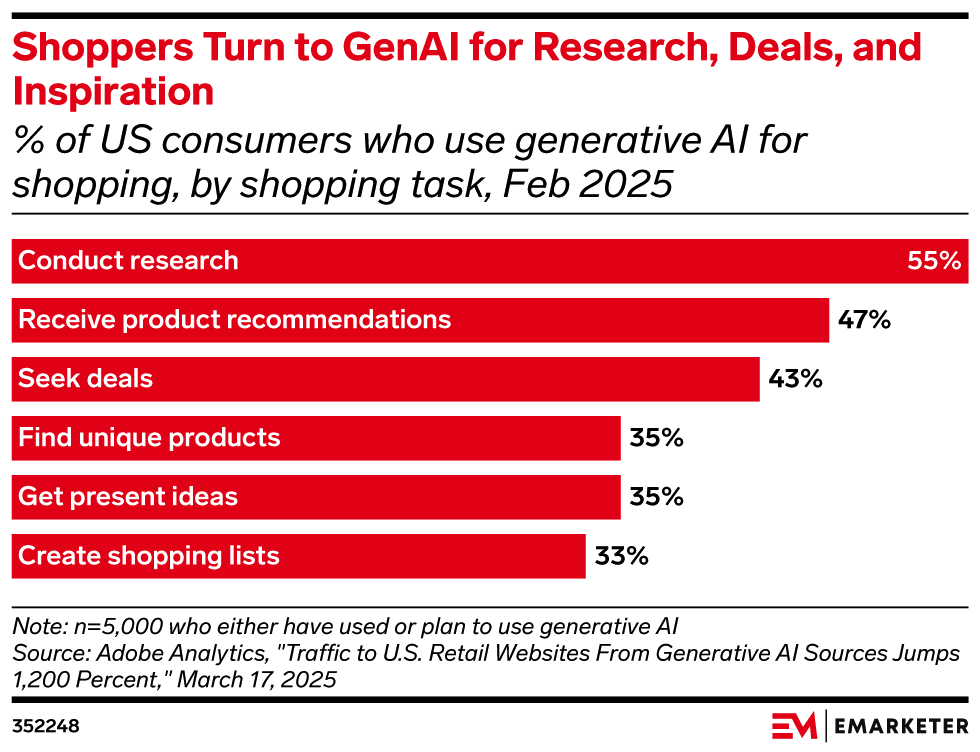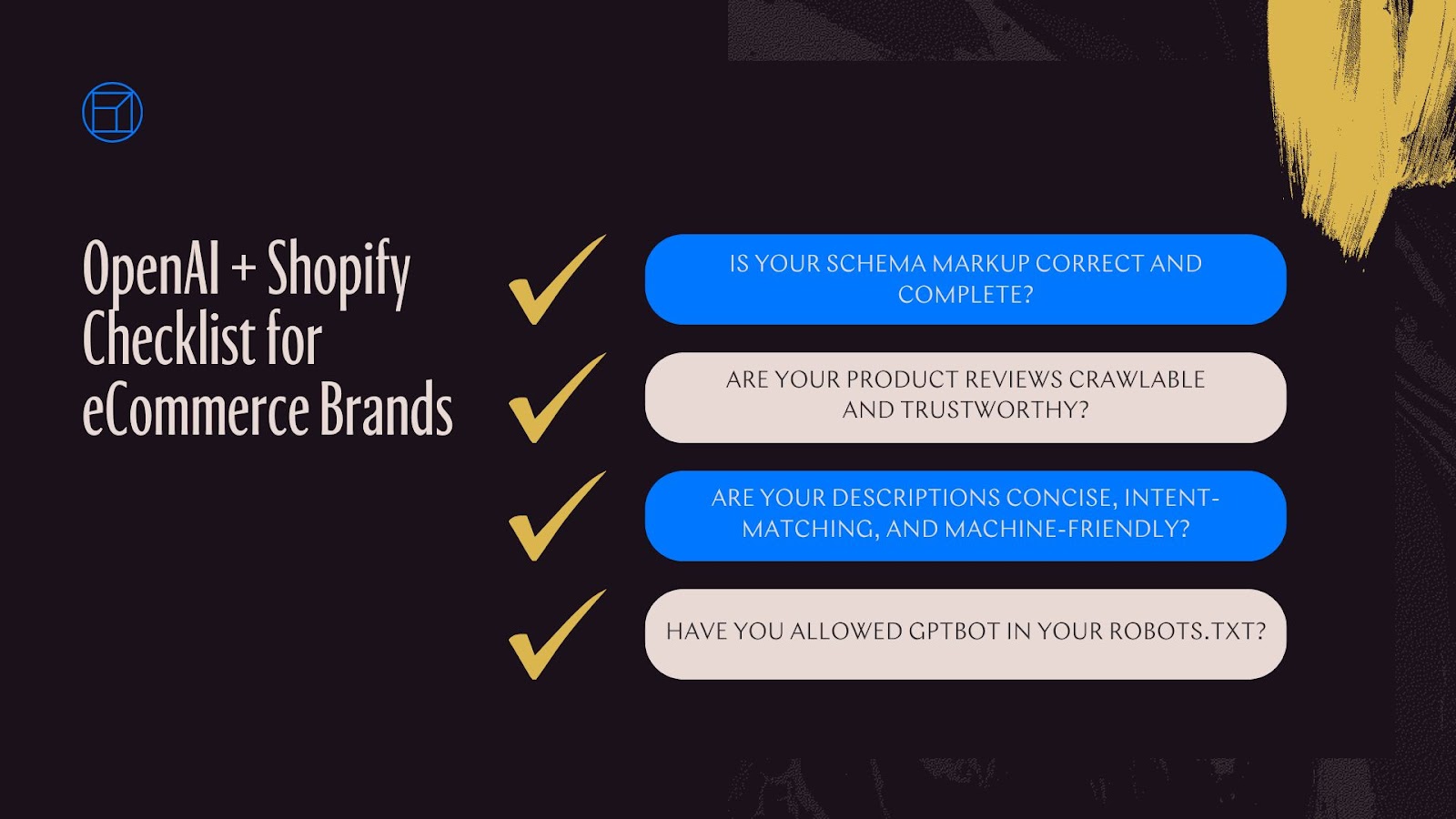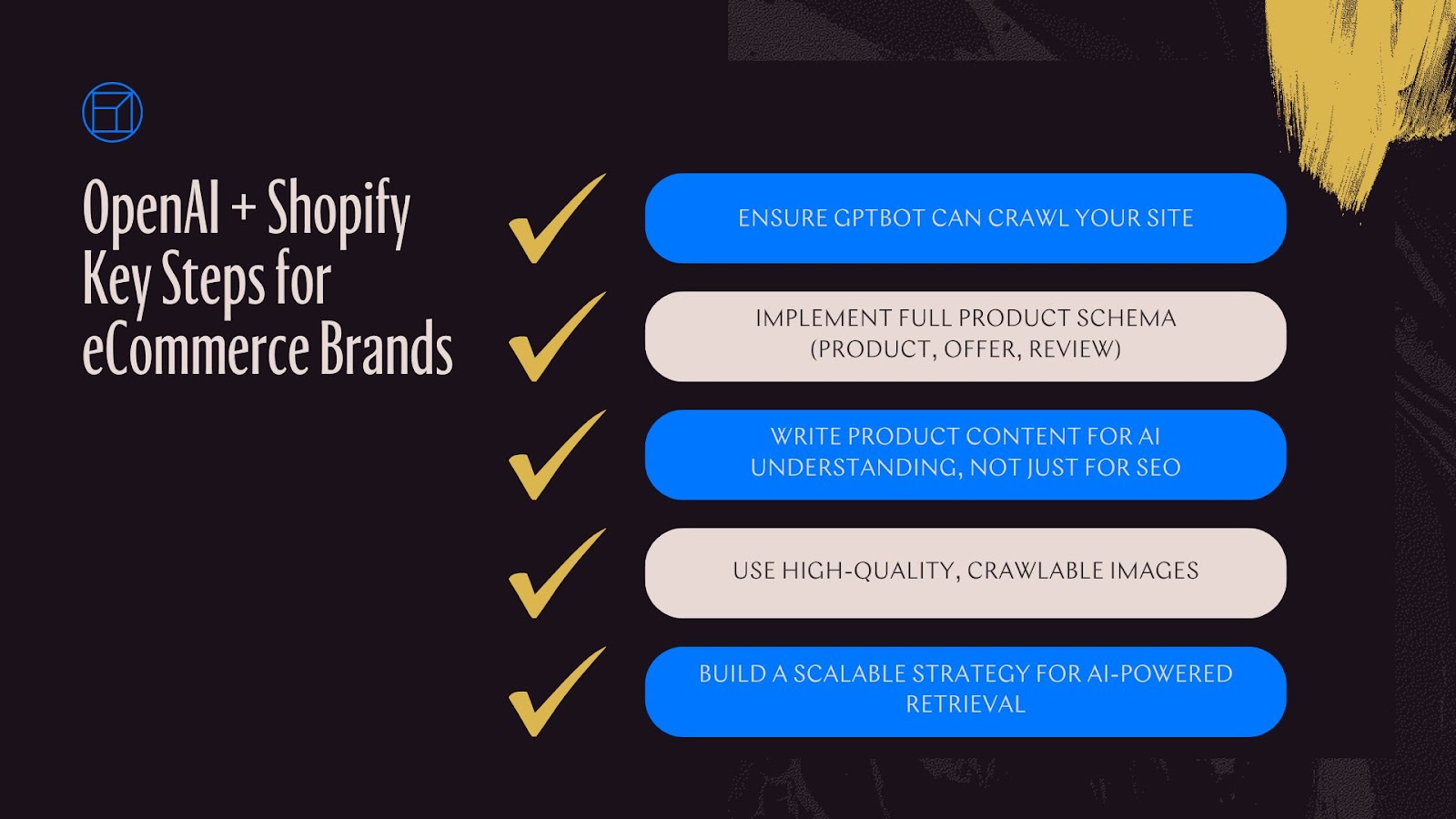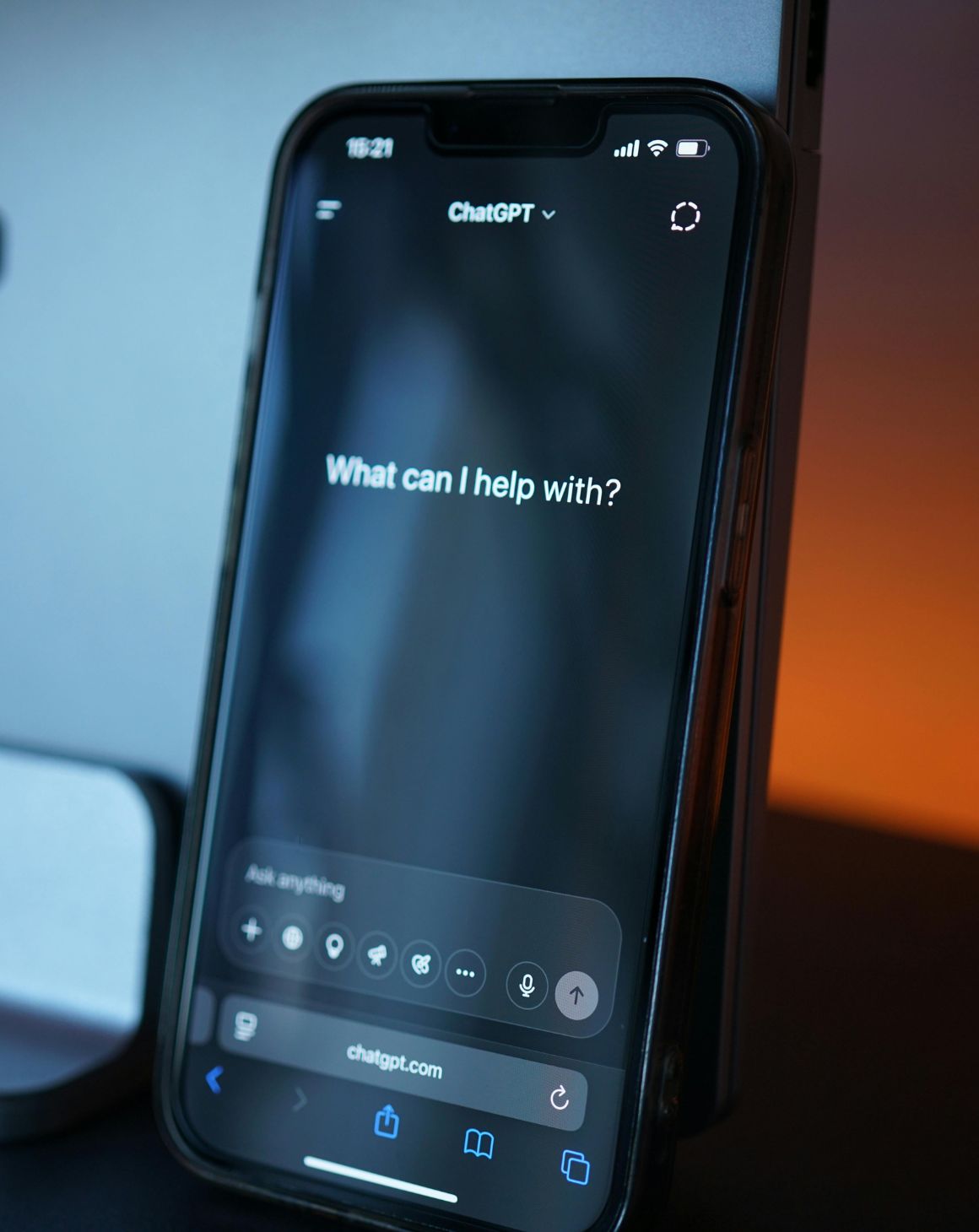While most brands are still optimizing for yesterday’s algorithms, OpenAI made the boldest move in eCommerce this year and almost no one noticed. Shopify is now an official shopping data partner inside ChatGPT. This quiet rollout has significant implications, altering everything.
We’re no longer talking about future trends, but about a live shift in how products are discovered, evaluated, and purchased. Search is being redefined in real time. And the storefront? It’s no longer your website. It’s the AI that answers your customers’ questions.
This isn't just about listings showing up in ChatGPT. It’s about owning contextual visibility. One where AI recommends your brand—surfaced in natural language queries, and inserted into conversations before a shopper ever opens Google or Instagram.
Shopify is the infrastructure. OpenAI is the interface. And your brand? It either shows up intelligently or disappears.
For DTC brands, this is a once-in-a-decade window to earn organic relevance in a channel that’s still wide open. But it won’t stay that way for long.
What Happened in ChatGPT (OpenAI)?
On May 15, 2025, OpenAI quietly updated its ChatGPT documentation to list Shopify as a verified third-party data provider, alongside Bing. This came just weeks after the launch of ChatGPT Shopping, a feature that lets users search for products in natural language and get real-time, visual results.
Now, when a shopper types, for example, “Show me minimalist white sneakers under $150 with good reviews,” ChatGPT returns product listings, with images, pricing, reviews, and availability. This is done directly from Shopify stores, not just traditional search engines.
Also, 39% of U.S. customers have utilized or plan to use genAI for online shopping. In short, the world’s fastest-growing AI interface is now pulling inventory from one of the leading eCommerce platforms. And most brands aren’t ready for it.

Why This Changes Everything
Shopify Is Now Feeding ChatGPT: Here’s Why Most Brands Are Invisible
The integration means millions of Shopify stores are now directly feeding product data into the ChatGPT shopping experience—no plugin, no setup required (as long as they’re crawlable and optimized for GEO). According to ImaginePro.ai, many merchants are already showing up by default, provided they haven’t blocked OpenAI’s crawler (GPTBot). Yet a significant number are still missing from this new visibility layer—not because the opportunity isn’t there, but because their sites simply aren’t structured for it.
This is organic visibility inside AI, and the early adopters will win big.
Conversational Commerce Is Now a Reality
We’ve heard the term “conversational commerce” tossed around for years. But this isn’t about chatbots in a support widget. This is full-scale AI-assisted buying, where product discovery, research, and soon checkout, all happen in a flow.
According to leaked backend parameters and developer community discussions, ChatGPT is already showing signs of supporting in-chat transactions via fields like shopify_checkout_url and buy_now.
We’re moving from clicks and funnels to conversation and intent.
SEO as We Know It Is About to Evolve
With OpenAI leveraging Shopify as a structured product source, AI Visibility Optimization (AIVO) becomes the new SEO frontier. It’s no longer just about ranking on Google. It’s about being machine-readable, structured, relevant, and trusted.
This introduces a new strategic layer for eCommerce marketers:
- Is your schema markup correct and complete?
- Are your product reviews crawlable and trustworthy?
- Are your descriptions concise, intent-matching, and machine-friendly?
- Have you allowed GPTBot in your robots.txt?

This isn’t optional but foundational.
“AI discovery isn’t coming—it’s already here. We’re watching clients show up in ChatGPT from Shopify feeds in real-time. But showing up isn’t the win. What matters now is: how do you rank in a conversation? That’s what we’re helping brands solve—how to show up with context, intent, and structure that aligns with how AI actually responds.”
— Jovana Kacar, SEO Manager, Bluewheel Media
Where This Is Headed
We’re witnessing the quiet birth of AI-native shopping behavior.
- Product discovery will happen through conversation. People will describe needs, not keywords.
- Platforms like Shopify, not just Amazon, will power fulfillment.
- Search will evolve from page links to rich product previews inside AI chats.
- In-chat transactions will become the norm.
Shopify isn’t just a backend anymore. It’s becoming a frontline interface with AI shoppers, especially if ChatGPT continues to grow as a consumer-facing search engine alternative.
What You Should Do Now (If You’re in eComm)
If your brand runs on Shopify, now is the moment to get ahead:
- Ensure GPTBot can crawl your site (check documentation)
- Implement full product schema (Product, Offer, Review)
- Write product content for AI understanding, not just for SEO
- Use high-quality, crawlable images
- Build a scalable strategy for AI-powered retrieval

Final Thoughts
OpenAI didn’t need to shout this from the rooftops because the tech world is already watching closely. By adding Shopify as a native shopping partner, OpenAI just cracked open the next era of eCommerce.
The future of online shopping won’t be found in search bars. It will be spoken, refined, and fulfilled—one intelligent conversation at a time.
And for the millions of Shopify merchants out there?
You’re already in the conversation. Now it’s time to optimize for it.
Shopify Brands: Your Products May Already Be in ChatGPT (But Are They Optimized?)
At Blue Wheel, we help eCommerce brands prepare for the shift from traditional SEO to AI-first visibility. From GPTBot access and schema to structured content strategy, we ensure your products show up where real decisions happen.
Let’s talk about your discovery strategy in the age of ChatGPT. Reach out to our experts today!







.png)
.png)
